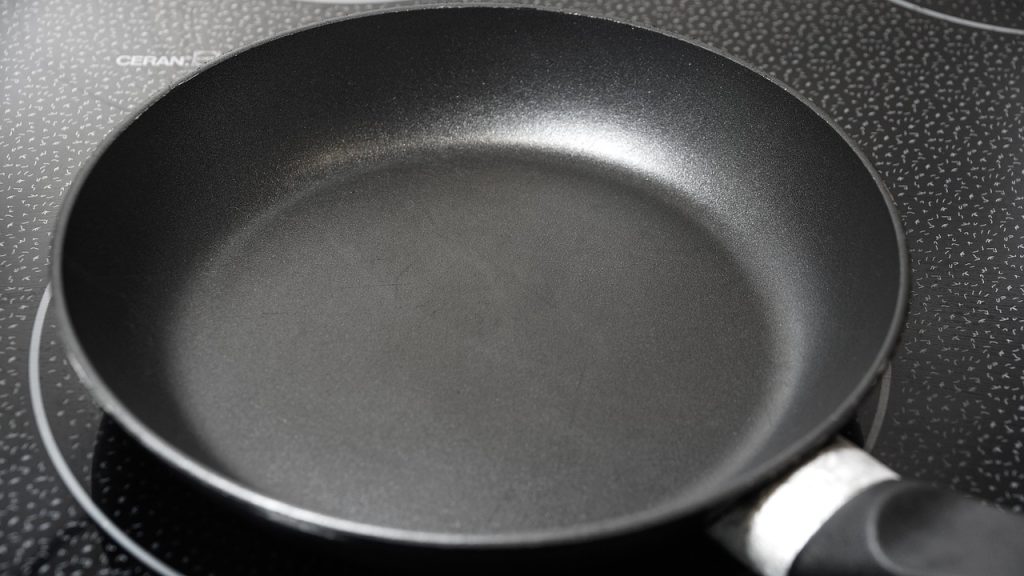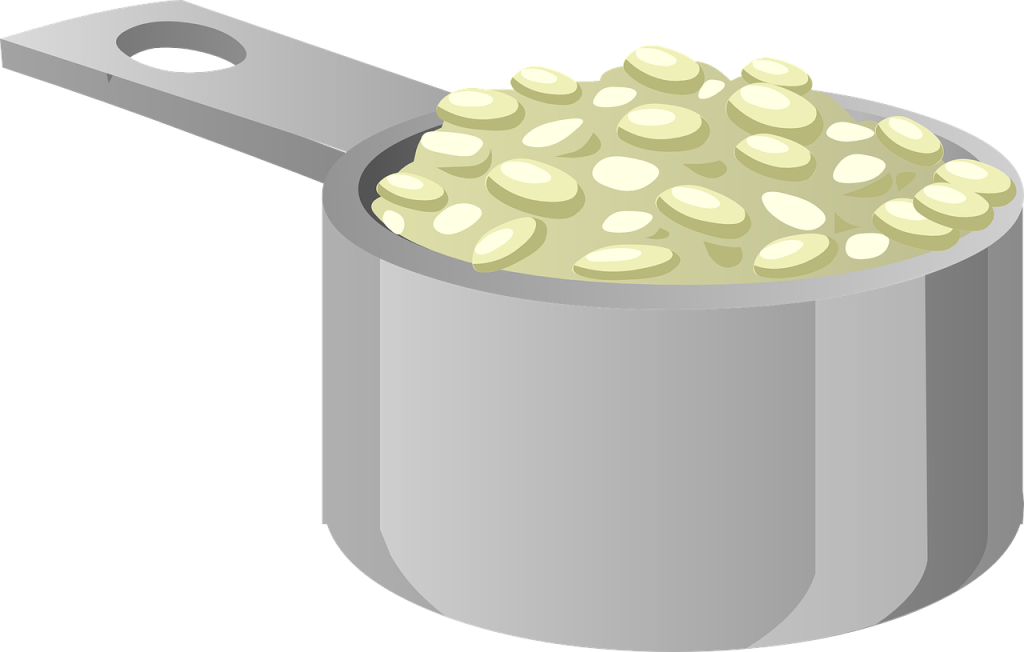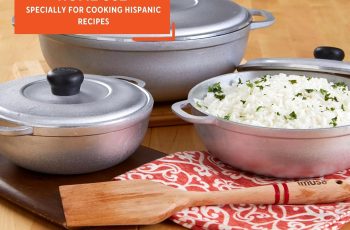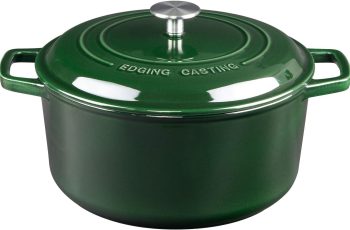Ad Blocker Detected
Our website is made possible by displaying online advertisements to our visitors. Please consider supporting us by disabling your ad blocker.
In this article, you will explore the fascinating world of saucepan heat distribution and how different saucepans perform in distributing heat evenly. By examining the results of various tests, you will gain valuable insights into which types of saucepans are most effective in ensuring uniform cooking temperatures, enabling you to make informed decisions when selecting your culinary tools. So, let us delve into the realm of saucepans and uncover the secrets behind their heat distribution capabilities.
Materials and Methods
Selection of saucepans
Choosing the right saucepan is crucial for achieving optimal heat distribution during cooking. For this experiment, a variety of saucepans were selected from different brands and made of different materials, such as stainless steel, aluminum, and copper. This selection allowed for a comprehensive comparison of heat distribution capabilities across various saucepan options.
Selection of heat source
To ensure consistency and accuracy in the experiment, a single heat source was chosen. In this case, an electric stove with controlled heat settings was utilized. By using the same heat source for all saucepans, any variations in heat distribution could be solely attributed to the saucepan’s quality and material.
Temperature measurement
Accurate temperature measurement is crucial for evaluating heat distribution. In this experiment, a high-quality digital thermometer was used to measure the temperature at different points within the saucepan. Temperatures were recorded at regular intervals to establish a comprehensive understanding of heat distribution.
Control variables
To maintain consistency in the experiment, certain variables were controlled. These included the volume of water used, the weight of the saucepans, the size of the burner used, and the duration of heating. By controlling these variables, the focus could solely be on the different saucepans’ heat distribution capabilities.
Experimental Procedure
Preparation of saucepans
Before conducting the experiment, all saucepans were thoroughly cleaned and dried to eliminate any potential contaminants that could affect heat distribution. Additionally, the handles of the saucepans were covered with heat-resistant materials to prevent any heat transfer from the handles to the thermometer.
Heat source setup
The electric stove was set to a predetermined heat setting, ensuring consistency across all saucepans. The burner size was chosen to match the base size of each saucepan, allowing for efficient heat transfer. The saucepans were then placed on the stove and evenly spaced to minimize any interference between saucepans.
Temperature measurement procedure
To measure the temperature distribution within the saucepans, the digital thermometer probe was inserted into different areas of each saucepan. Temperatures were recorded at various points, including the center, edges, and corners of the saucepans. This comprehensive measurement approach allowed for a detailed analysis of heat distribution across the saucepan’s surface.
Data collection and analysis
The recorded temperature data was collected for each saucepan and analyzed to determine the heat distribution patterns. Statistical methods, such as mean and standard deviation, were used to calculate the average temperature and the variation across the different areas of the saucepans. This analysis provided valuable insights into the heat distribution capabilities of each saucepan.

Results
Heat distribution comparison
The analysis of temperature data revealed significant differences in heat distribution among the different saucepans. Certain saucepans exhibited more uniform heat distribution, with minimal temperature variations across different areas. In contrast, others showed noticeable temperature gradients, indicating uneven heat distribution.
Effect of material on heat distribution
The materials used in the construction of saucepans played a significant role in heat distribution. Stainless steel saucepans, known for their durability and heat resistance, demonstrated fairly even heat distribution across their surfaces. Aluminum saucepans, on the other hand, displayed slightly more temperature variations, particularly towards the edges. Copper saucepans exhibited excellent heat conductivity, resulting in uniform heat distribution throughout the cooking surface.
Comparison of heat distribution between brands
When comparing heat distribution capabilities between brands, notable differences were observed. Some brands consistently provided superior heat distribution performance across their product range, while others exhibited variations in heat distribution efficiency. These findings highlight the importance of brand selection when looking for saucepans with optimal heat distribution capabilities.
Discussion
Factors affecting heat distribution
Several factors were found to influence heat distribution in saucepans. Material composition, thickness, and design of saucepans all played significant roles in determining the extent and uniformity of heat distribution. Additionally, surface contact with the heat source and the shape of the saucepan influenced the overall heat distribution pattern. Understanding these factors is crucial for selecting the most suitable saucepan for specific cooking needs.
Significance of material on heat distribution
The material used in the construction of saucepans had a profound impact on heat distribution. Stainless steel saucepans, with their high thermal conductivity, provided consistent heat distribution. Aluminum saucepans showed slight variations due to their lower conductivity. Copper saucepans demonstrated the best heat conductivity, resulting in superior and even heat distribution. Choosing the appropriate material is essential for achieving consistent cooking results.
Comparison of saucepans’ heat distribution capabilities
Through this experiment, it became evident that not all saucepans are created equal in terms of heat distribution capabilities. Some brands consistently outperformed others, with their saucepans exhibiting more even and efficient heat distribution. These findings emphasize the significance of considering brand reputation and quality when selecting cooking utensils, especially saucepans.

Limitations and Recommendations
Possible limitations of the study
Despite the meticulous approach to conducting this experiment, certain limitations must be considered. The experiment focused on a limited number of saucepans and heat sources, which may not fully represent the vast range available in the market. Additionally, other factors such as lid design and handle material could potentially influence heat distribution and were not specifically examined in this study.
Suggestions for future research
To further enhance our understanding of heat distribution in saucepans, future research could explore additional variables, such as lid design, handle material, and the impact of cooking techniques on heat distribution. Moreover, conducting similar experiments with a broader range of materials and saucepan sizes would provide a more comprehensive understanding of heat distribution capabilities across different saucepans.
Recommendations for saucepan selection
Based on the findings of this study, it is recommended to consider saucepans made from materials with high thermal conductivity, such as stainless steel or copper, for more efficient heat distribution. Furthermore, selecting saucepans from reputable brands known for their consistent heat distribution performance is advised. By choosing suitable saucepans, cooking enthusiasts can ensure more precise and uniform heat distribution, leading to improved overall cooking results.
Conclusion
Summary of findings
The experiment revealed the significant impact of saucepan materials and brand selection on heat distribution. Stainless steel saucepans demonstrated consistent heat distribution, while aluminum saucepans exhibited slight variations. Copper saucepans exhibited superior heat conductivity and provided the most even heat distribution. Certain brands consistently outperformed others in terms of heat distribution capabilities, highlighting the importance of selecting trusted and reliable saucepan manufacturers.
Implications for cooking enthusiasts
The findings of this study have several implications for cooking enthusiasts. By selecting saucepans with optimal heat distribution capabilities, enthusiasts can achieve more precise and uniform cooking results. Additionally, understanding the impact of different saucepan materials allows for more informed decisions when investing in cooking utensils, ensuring long-lasting and efficient heat distribution performance.
Final remarks
Testing the heat distribution of different saucepans has provided valuable insights into the factors influencing heat distribution and the implications for cooking enthusiasts. It is recommended to consider the material composition, thickness, and brand reputation when selecting saucepans for optimal heat distribution. With the right saucepan choice, cooking enthusiasts can enhance their culinary experiences and achieve consistently delicious results.


